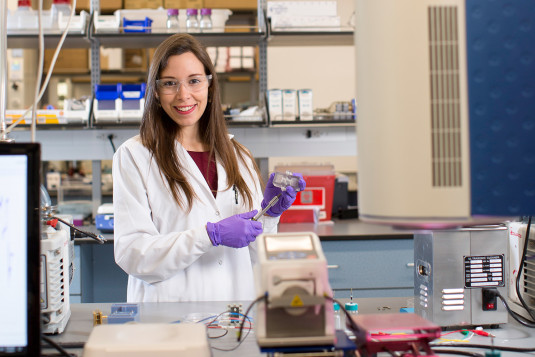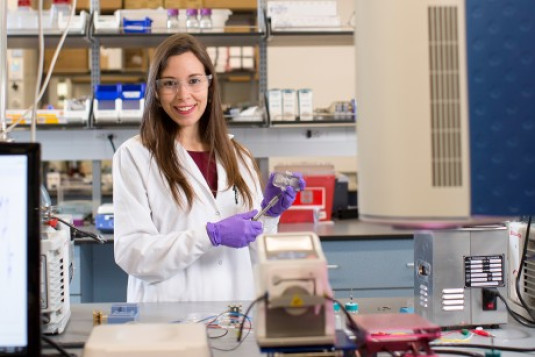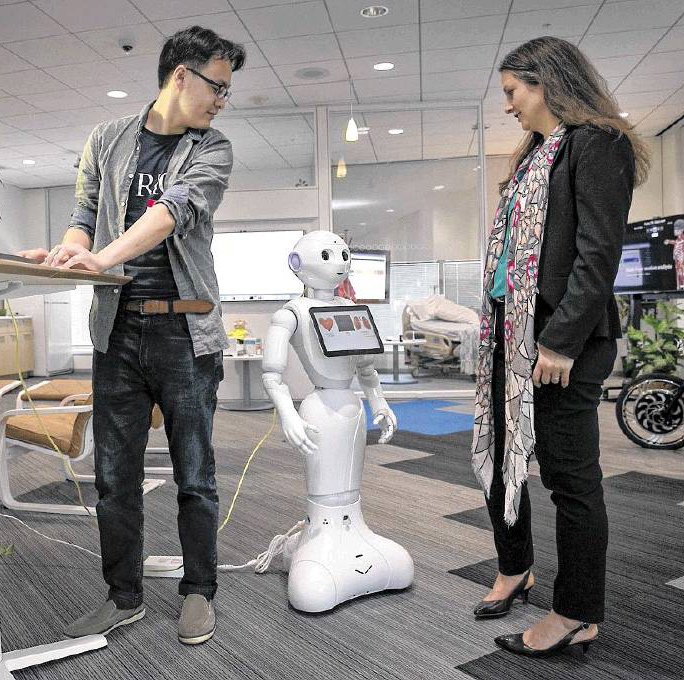
Augmenting ability
From a young age, Susann Keohane was intrigued by innovation. Though she expressed an innate interest and talent in math, it took the completion of her electrical and computer engineering degree and guidance from a few key mentors for her to realize that she could become an inventor herself. Now, 20 years and almost 200 patents into her career, Keohane is an IBM Master Inventor and the IBM Global Research Leader for the Aging Initiative. She is also a leading advocate for increased participation of women in STEM fields and an outstanding example of what’s possible for female inventors.
12 min read
Each month, our Journeys of Innovation series tells the stories of inventors or entrepreneurs whose groundbreaking innovations have made a positive difference in the world. This month, we focus on the journey of an innovator who’s changing the way we view aging.
SUSANN KEOHANE: I probably would not have been an engineer if it wasn’t for my third-grade teacher, Mrs. Coffee. She kind of told me, “You know, you’re kind of, you’re good at math. This is kind of a little bit of a gift.” She encouraged it. And then from that moment on, no one could tell me different. [Laughter.]
LINDA HOSLER: With that gift, a healthy amount of determination, and a little encouragement, Susann Keohane has set an example for other innovators. I’m Linda Hosler, from the United States Patent and Trademark Office. A recent USPTO report to Congress shows that women comprise only a minority of patented inventors. Keohane, however, holds nearly 200 patents. She built on her innate interest in math to become an engineer and a leading voice at IBM, which has received more patents annually than any other U.S. technology company for over 25 consecutive years. Keohane’s innovations focus on artificial intelligence solutions and internet-based sensors for healthy aging. Here is a bit of our conversation.
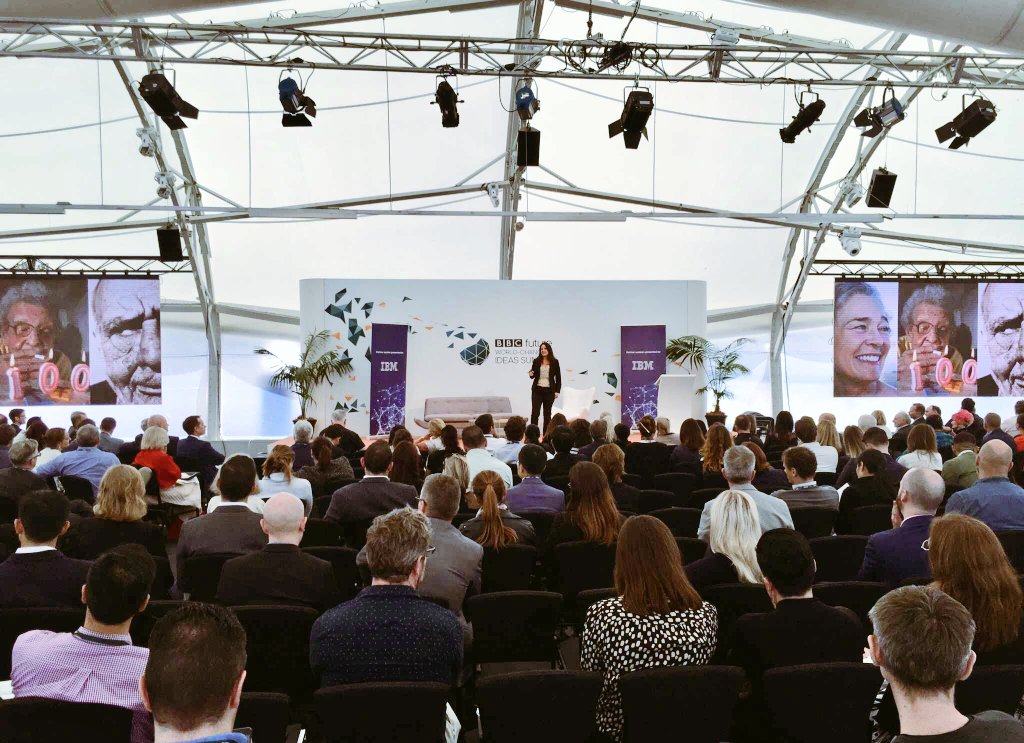
Susann Keohane gives a presentation on the IBM Aging Initiative at the 2016 BBC World Changing Ideas Summit in Sydney, Australia.
LINDA HOSLER: We often think of innovation coming from identifying a problem that needs to be solved. Could you talk a little bit about how you identified the problem that you focused on?
SUSANN KEOHANE: It’s normally a place of seeing a pain point or a struggle and knowing that we can create something that could address it. Making technology accessible to people with disabilities has been my focus for 12 years. So how can technology augment someone’s ability, how can it make it easier for them to kind of get through the daily grind—so that they can spend more time enjoying the things that they love? I look at it as a way of how I envision the world I want to live in. So, a lot of my innovation and my ideas stem from user needs. How can we make something better for the user experience or for someone that is struggling with how technology is today?
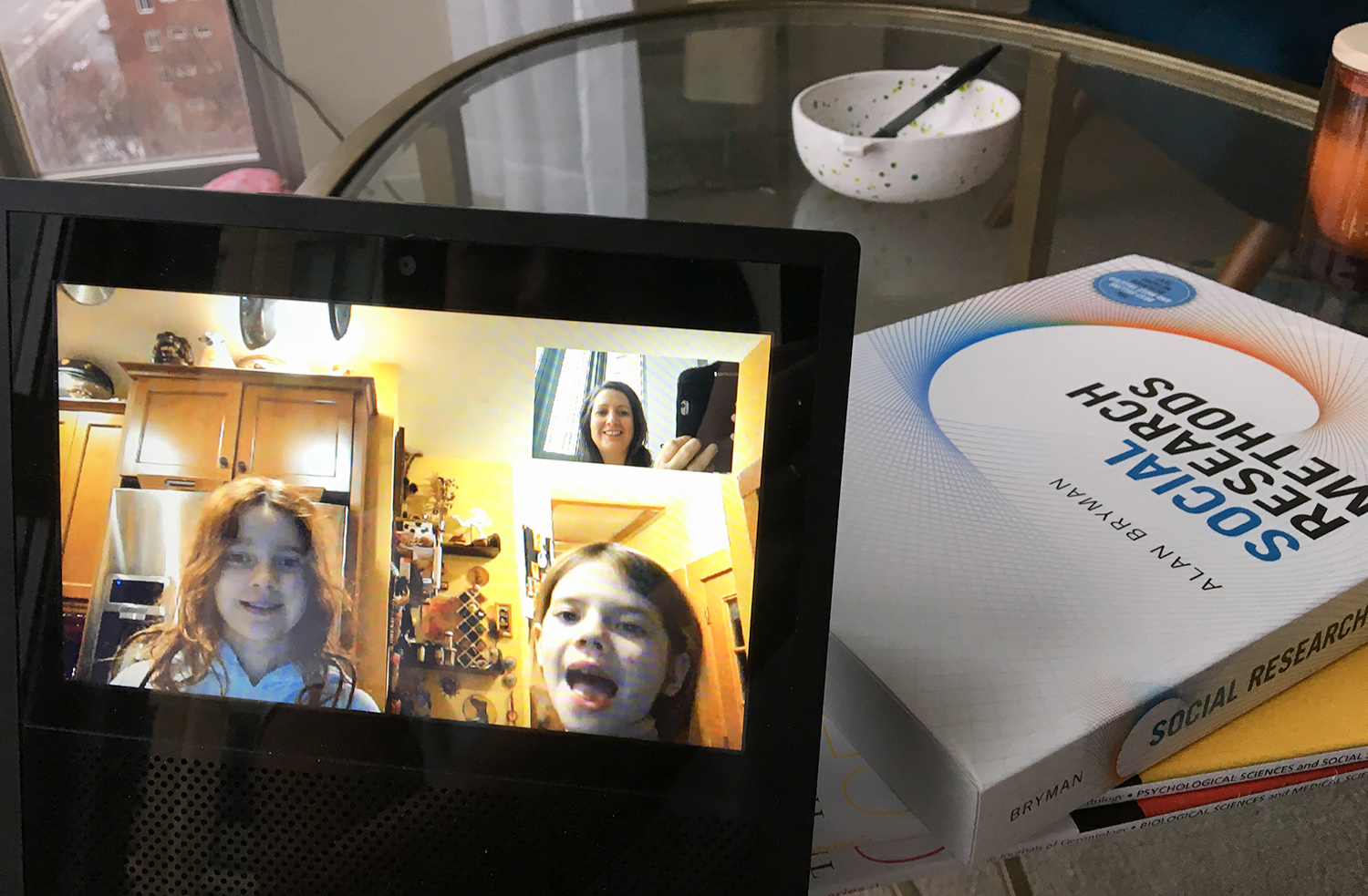
Susann Keohane fosters an innovative spirit in her children, often ideating and discussing challenges and possible solutions with them—even when she travels for work.
LINDA HOSLER: How do you find those pain points from your users?
SUSANN KEOHANE: Oh my gosh. Just walk around in this world. [Laughter.] I was just talking to my daughter, who is 10, last night about patents, and she was looking around the kitchen, and she struggles to get to the microwave because it’s above the stove. And she was like, “I wish I could just, you know, press a button and the microwave would come to my height.” I’m like, “That’s a great idea, Sylvia.” And I was like, “What if it could just sense that you’re in front of it and you want to use it, through infrared or some kind of technology, or you spoke to it and you didn’t even have to press a button?” And she was like, “Yeah, that sounds great.” And so, just right there with my 10-year-old, she had a pain point, and we were just kind of ideating on what could be possible to make it easier for her to use and interact with a device.
LINDA HOSLER: That’s amazing. So how did you get into this field? Do you have, like a, I call it an origin story of how you became an inventor?
SUSANN KEOHANE: When I realized that I, I, me, me, I, could be an inventor was when I interned at IBM and my team lead, Nadeem Malik—he’s still at IBM—I was in his office, and on his wall was a patent application. I was like, “You have a patent?” He’s like, “Yeah, I’m, I’m an inventor.” And then that was it. “How did you get a patent? How can I get a patent? Can we patent stuff? How does … ?” So then I just kind of bombarded him with a million questions. And what I came out of that conversation was I can come up with an idea that’s patentable. And, he provided me some guidance on, what ideas are, what is novelty, what’s prior art. So he kind of explained to me the process, but the most important thing that came out of it was that I, too, could be an inventor.
“If you’re able to find someone that can mentor you in patenting and innovation, that will really jump-start your success.”
LINDA HOSLER: So why was it so important for you to receive patents?
SUSANN KEOHANE: ’Cause it’s cool! [Laughter.] I mean, when it comes down to it, to say you’re an inventor. I grew up in—ok, let me rewind. I grew up in Fort Myers, Florida, and you might not know this, but Henry Ford and Thomas Edison both had summer homes—or sorry, winter homes—in Fort Myers, Florida. And so, as in school, they would take you to Thomas Edison’s laboratory, and you get to see where he invented, and they would talk about Alexander Bell and the telephone. And that was my first kind of exposure to inventors, but I never thought I could be an inventor. I just thought of these men, these scientists. They’re the ones that invent, and so when I was in that office with my team lead at the time, and I realized I can do this, too, I was so determined. I’m like, “I want to be an inventor.” It’s just so cool to have innovation that’s unique and novel that you contributed to the world. It’s pretty exciting.
LINDA HOSLER: Overall, what would you say that intellectual property—how has intellectual property played a role in your career? Obviously, it’s provided, you know, being an inventor as inspiration for you, but could you talk about it in terms of your career?
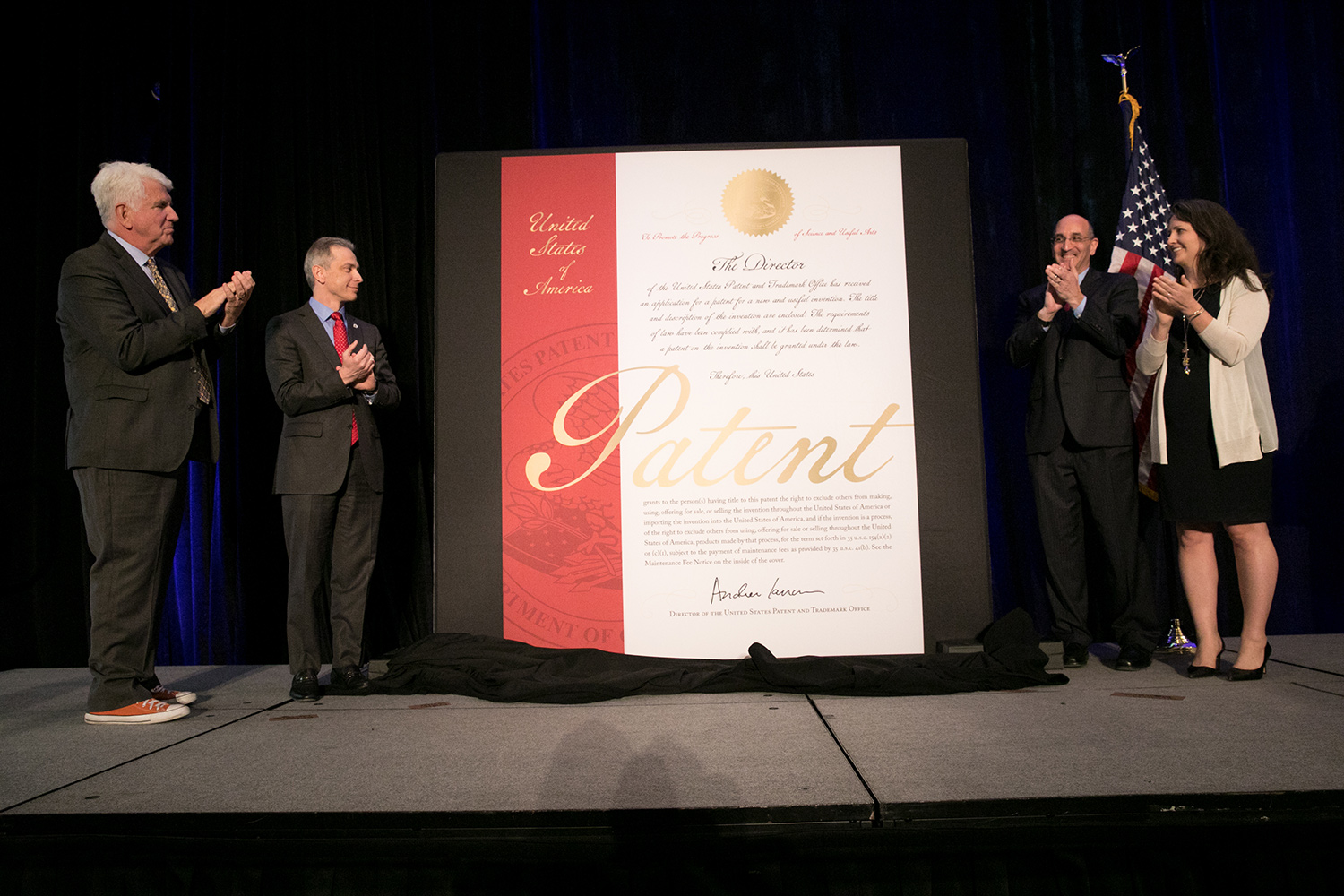
Susann Keohane (right) joins (from left) Ethernet inventor and National Inventors Hall of Fame inductee Robert Metcalfe, USPTO Director Andrei Iancu, and Commissioner for Patents Drew Hirshfeld to unveil the USPTO’s patent cover redesign commemorating Patent 10 Million during a special ceremony at the South by Southwest Conference in Austin, Texas, in March 2018. (Photo by Jay Premack/USPTO.)
SUSANN KEOHANE: Really, I’ve—my career has been at IBM, and IBM has received the most patents out of any company for 25 consecutive years. And for the last 20 years, I’ve contributed to that with my innovations, and my patents, and we recently crossed the 100,000 patent milestone. Right there, IBM has a focus on innovation, and because of that, I think that’s made it easier for me to be an inventor because they do have a process in place. There is a way to harvest ideas, for people to review your ideas, for you to work with patent attorneys, to help flesh it out and submit it. So, because they have this process in place, it’s allowed me the freedom to be creative and to innovate; because it is important to IBM, it helps my career. So we’re not rated per se on patents, but for someone like me that has 181 worldwide patents, it’s definitely—people take notice.
And at IBM, we also can get a moniker of Master Inventor, so I can say I’m an IBM Master Inventor, and what I love about our Master Inventor program, it’s not just about the number of patents you file. It’s really about how are you helping someone who’s new to our patent process, how do you sherpa them through, how do you inspire them that they, too, can be an inventor, just like my team lead did.
LINDA HOSLER: So over the course of your inventing career, have you ever had a “Eureka” moment?
Susann Keohane: I feel like I’ve had a few. I mean every time you get a patent, it’s a novel idea. So all of those are a little bit of a “Eureka” moment. Like, wow, this is a new space, no one filed this before, and that part can get real exciting. But most recently, I’m really into the Internet of Things and home automation, and how to help the aging demographic age in place, and what does that mean.
LINDA HOSLER: Is there anything that inspired you to look into aging, or is that something you’ve always been interested in?
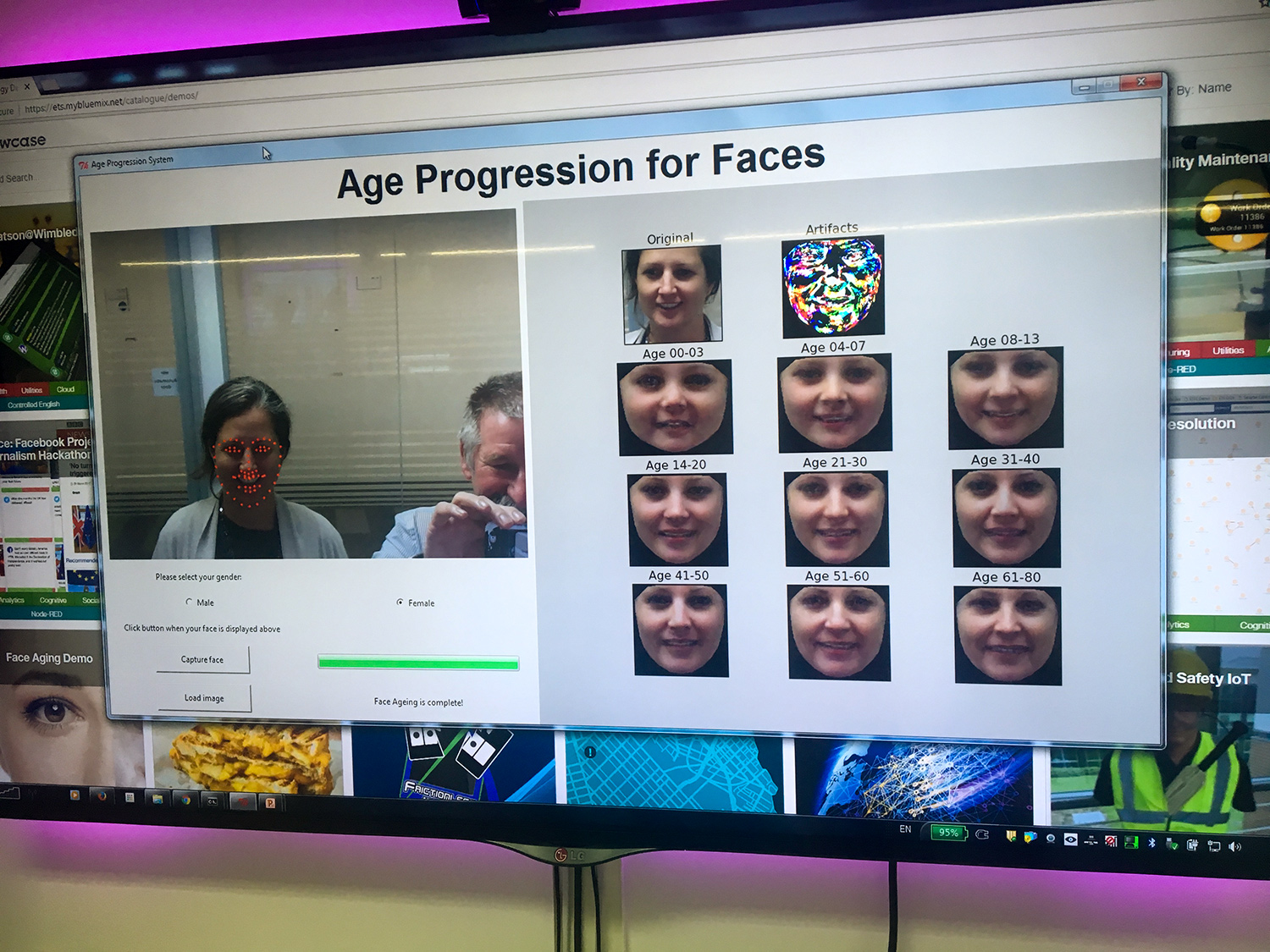
Susann Keohane demonstrates age progression software at the IBM Hursley development lab in the United Kingdom while on a tour of IBM global labs to learn about work related to aging. The program shows age progression and regression from 0 to 80.
SUSANN KEOHANE: Last week was my 20th year at IBM. I started right after—actually started in college. I interned with them, so I was pretty young when I started, but I did eight years working on AIX [Advanced Interactive eXecutive] operating system. I came out of school with electrical engineering, computer engineering degree, and I was very tied to hardware, and what I realized is I slowly just really wanted to get to user experience, user interfaces.
I kind of worked my way up the stack into software, and I had the opportunity 12 years ago to join IBM Research to focus on how to make technology accessible to people with disabilities. And it felt so good to know that I could potentially help someone use our technology that was struggling, and they shouldn’t be struggling. Everyone should have equal access. And what I’ve found in that process is that we all eventually, maybe, are going to acquire some form of a disability, and we kind of age into disabilities. Around 40, your eyesight goes a little bit, you know.
So aging was interesting to me because, one, it mainstreams accessibility because everyone can relate, and then two, I think that it’s a harder problem in a way because the change of ability over time, and so how do you understand when someone needs assistive technology? They might not be aware that they might not identify as a person with a disability, but it can be very much beneficial to them.
“What I’ve found ... is that we all eventually, maybe, are going to acquire some form of disability, and we kind of age into disabilities.”
LINDA HOSLER: Is there a specific person or experience that first got you excited about science and technology?
SUSANN KEOHANE: I probably would not have been an engineer if it wasn’t for my third-grade teacher, Mrs. Coffee. I was an okay student. I wasn’t a great student. I wasn’t a bad student. [Laughter.] In third grade, is when I really found something I thought was fun and cool and I couldn’t get enough of. And that’s when we started to do multiplications. I loved math; I loved multiplications. I would just try to memorize them all, learn them all, like break them down. I was already doing kind of a little bit of algebraic stuff back then. I just thought it was so cool. And, it was her that, she kind of told me, “You know, you’re kind of, you’re good at math. This is kind of a little bit of a gift. This is probably your special gift in the world.” You know, she encouraged it. And, I still think of that day that she said, “You’re good at this.” And I was like, “Oh, I am good at math.” [Laughter.] And then from that moment on, no one could tell me different. [Laughter.] And that little bit of encouragement has stuck with me. I mean, gosh, many, many decades later, I just think of that. That was, that was the moment I was like, I’m good at math.
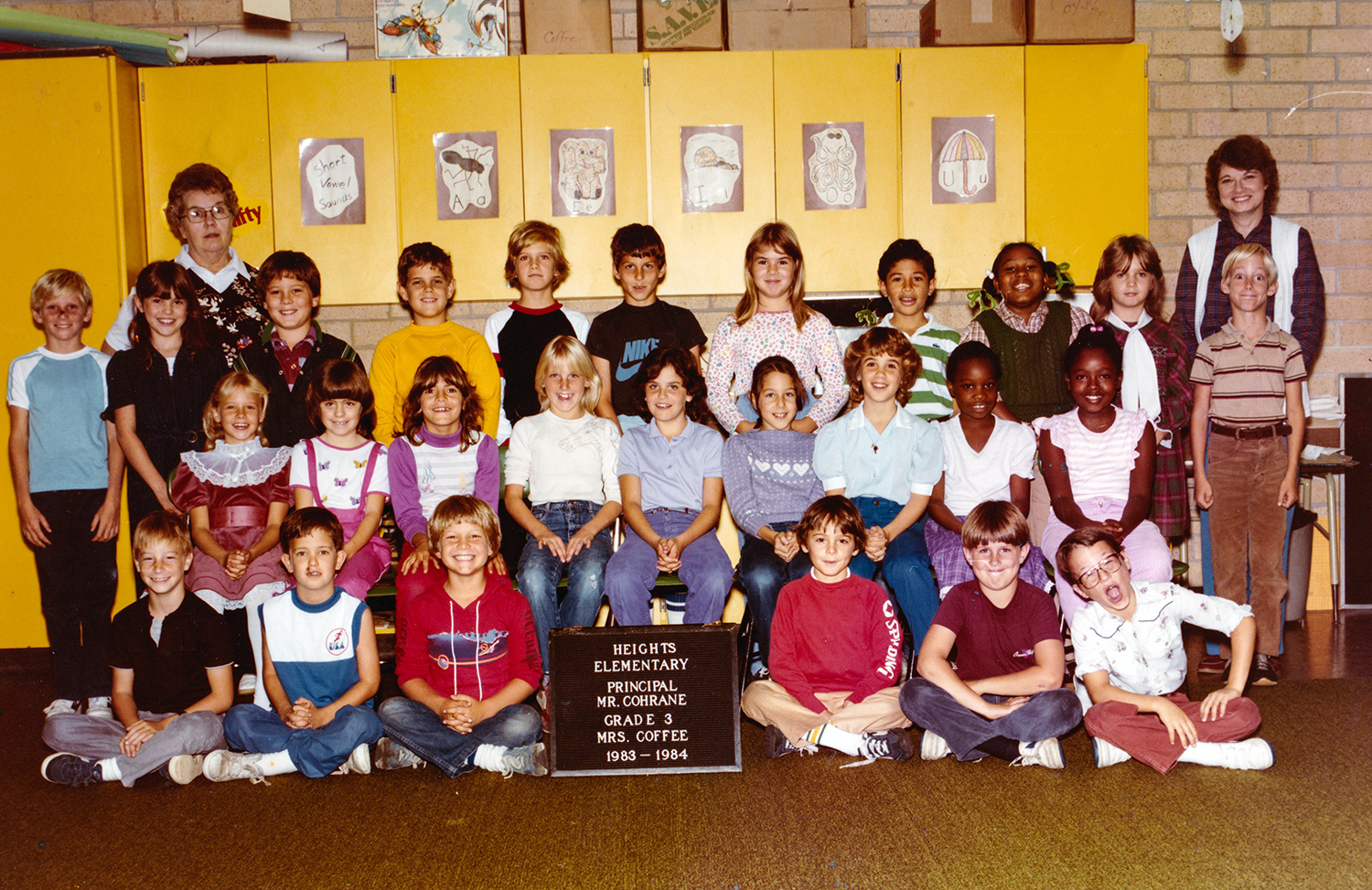
Susann Keohane (back row, second from right) stands next to her third-grade teacher, Mrs. Coffee, in an annual school photo with her classmates. Mrs. Coffee encouraged Keohane’s innate math abilities.
LINDA HOSLER: As I’m sure you know, there’s been a lot of recent research on the topic of the gender gap in STEM fields, which show that girls perform as well as boys in math in early years, but by the time they get to high school, this gap grows in the more advanced science and technology and math courses. Why do you think it’s so important to encourage girls at a young age, so more of them go on to have STEM careers?
SUSANN KEOHANE: Having a woman’s perspective, having a woman’s point of view, having women solve problems that benefit other women and men is important. You need that diversity. You need to be able to approach things through multiple perspectives. So I think it’s important that young girls, young women especially, realize that they can build the future of tomorrow, and we’re counting on them to build that future. We need their voice. We need their perspective. We need their brains.
“I think it’s important that young girls, young women especially, realize that they can build the future of tomorrow, and we’re counting on them to build that future. We need their voice. We need their perspective. We need their brains.”
LINDA HOSLER: I wanted to shift gears a little bit, and then, since you are a Master Inventor, get some advice that you might have for other innovators. So thinking back, and given your own experiences, and speaking to a wide audience, what advice would you give to other innovators?
SUSANN KEOHANE: Honestly, find a mentor. Find someone that understands the process, because I think it would save a lot of anguish. Having that person kind of sherpa you is really helpful. So, if you’re able to find someone that can mentor you in patenting and innovation, that will really jump-start your success. It takes some time to solve a problem in a novel way. And if you’re reinventing solutions, well you’re on the right track, right? ’Cause that’s how someone else solved it. So you’re thinking like an inventor. You just don’t get to claim the invention, but you’re on the right path, so don’t get discouraged if you find out that you’re struggling with finding a novel solution, because if you’re solving problems that people have solved the same way, then you’re on the right track. You just have to either find a different problem to solve, or come up with a new way to look at it, a new perspective.
LINDA HOSLER: Thank you to Susann Keohane for the work she has done for the aging community, and for showing young women that they, too, can become inventors. From the USPTO, thanks for listening.

Susann Keohane (fourth from right) participates in a design thinking session with the IBM Health Service Corps at the Global Health Catalyst Summit at Harvard Medical School in 2019. In the session, participants worked on understanding how cancer treatment is handled in sub-Saharan Africa and how technology might help deliver better care to rural areas.
Credits
Produced by the USPTO Office of the Chief Communications Officer. For feedback or questions, please contact inventorstories@uspto.gov.
Interview by Linda Hosler. Audio editing by Jay Premack. Photos, unless otherwise noted, provided by Susann Keohane. Story production by Rebecca Fritchman with additional contributions from Marie Ladino, Eric Atkisson, and Alex Camarota.
References
Carly Berwick, “Keeping Girls in STEM: 3 Barriers, 3 Solutions.“ Edutopia, March 12, 2019. https://www.edutopia.org/article/keeping-girls-stem-3-barriers-3-solutions.
Gene Quinn, “The Patent Gender Gap Goes beyond Fewer Women in Math and Sciences.“ IPWatchdog, September 21, 2016. https://www.ipwatchdog.com/2016/09/21/the-patent-gender-gap-goes-beyond-fewer-women-in-math-and-sciences/id=72774/.
“Encouraging Girls in Math and Science.“ U.S. Department of Education, September 2007. https://ies.ed.gov/ncee/wwc/Docs/PracticeGuide/20072003.pdf.
Report to Congress pursuant to P.L. 115-273, the SUCCESS Act. USPTO, October 2019. https://www.uspto.gov/sites/default/files/documents/USPTOSuccessAct.pdf.
Progress and Potential: A profile of women inventors on U.S. patents. Office of the Chief Economist, USPTO, February 2019. https://www.uspto.gov/sites/default/files/documents/Progress-and-Potential.pdf.


